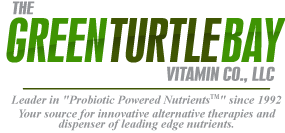Liver Detoxification and Herbs
Detoxification is the removal of chemicals from the body likely to cause tissue injury. Toxins that come from outside the body, called xenobiotics, include environmental chemicals, food chemicals and contaminants, drugs and herbs, and chemicals released from infectious organisms. Humans also naturally produce toxins. The liver needs to work efficiently to help break down toxins. All xenobiotics, even those from herbs, are potentially dangerous if the toxin is not dealt with by the liver. Conditions are thought to be caused or exacerbated by toxin overload include chronic fatigue syndrome, immune deficiency, allergies, cancer, liver damage, and chronic inflammatory disorders. The primary way the body deals with xenobiotics is to eliminate them via the urine or bile after processing by the liver, a process sometimes called biotransformation detoxification.
The aim of biotransformation is to make the toxin more water soluble so that it can be excreted in the bile or urine. The reactions involved with biotransformation are divided into two categories: phase I and phase II. During phase I, free radicals are generated. Phase I biotransformation causes the xenobiotic to bioactivate and a more toxic compound can result. One recommendation for people whose phase I mechanisms are under stress due to high exposure to xenobiotics is to take a good antioxidant to ensure that there is not oxidative damage occurring in the liver impairing its function. One such antioxidant is milk thistle (Silybum marianum), because it has actions specific for the liver. If the phase II reactions are overloaded, the toxin will be primarily metabolized by a phase I mechanism; the result can be liver toxicity, immunological reactions, or cancer. Thus the balance between phase I and phase II activity is very important to ensure that the xenobiotic will be deactivated.
There are five possible herbal actions on the liver which have relevance to detoxification: (1) protect the liver from toxic damage, (2) restore the liver after toxic damage, (3) stimulate the flow of bile, (4) stimulate Kupffer cell function (these cells, located in the liver, are part of the immune system), and (5) stimulate hepatic detoxification process. Many herbs do not directly affect the mechanism of biotransformation.
Schisandra chinensis is a well-recognized liver protective herb. Schisandra extract increases phase I and phase II activity. Gomisin A, a component of schisandra extract, can stimulate liver regeneration.
Turmeric (Curcuma longa) increases phase II activity in vivo. Curcumin, an active compound in turmeric, may prevent cancer by altering the detoxification process of carcinogens.
Milk thistle (Silybum marianum) does not directly influence biotransformation, but does protect the liver from many toxins. It causes an enhanced synthesis of glutathione, an important antioxidant naturally found in the body. Silymarin, the active flavonoid complex in milk thistle, causes liver regeneration.
Other dietary herbs that may be helpful include: rosemary (Rosmarinus officinalis), sage (Salvia officinalis L.), garlic(Allium sativum L.), parsley leaf, citrus fruit oils, and green tea (Camellia sinensis). Cruciferous vegetables (cabbage, Brussels sprouts, broccoli), horseradish (Armoracia rusticana), mustard (Brassica juncea), nasturtium, and watercress(Nasturtium officinale) may be beneficial as well.
Source: The American Botanical Council “HerbClip.” To join the American Botanical Council or to order education material call (512) 926-4900 X106.




